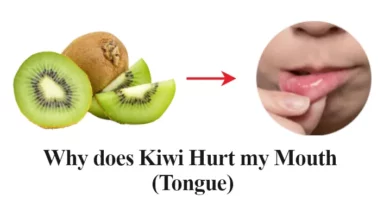13+ Tips How to get rid of Calcium Buildup on Teeth

Have you ever noticed a chalky white substance on your teeth that won’t seem to go away no matter how much you brush? Well, you’re not alone. Many of us struggle with calcium buildup in our teeth, also known as tartar or calculus.
But don’t worry, I’ve got some tips and tricks to help you get rid of it and keep your pearly whites shining bright. So, let’s dive into this article on “How to get rid of Calcium Buildup on Teeth” and say goodbye to those stubborn deposits. Trust me, your smile will thank you!
In This Article
How to get rid of Calcium Buildup on Teeth
Here we have described how to get rid of calcium deposits on teeth:
1. Brushing Technique
Start by revisiting your brushing technique. Make sure you’re using a soft-bristle toothbrush and brushing gently in circular motions, both on the surface of your teeth and along the gum line. Avoid aggressive brushing, as it can actually worsen the calcium buildup.
2. Floss Regularly
Don’t forget the power of flossing! Regular flossing helps remove plaque and food particles that contribute to calcium buildup. Aim to floss at least once a day, preferably before bedtime, to give your teeth a thorough cleaning.
3. Mouthwash Magic
Incorporating an antibacterial mouthwash into your oral care routine can do wonders for tackling calcium buildup. Look for a mouthwash with fluoride to strengthen your teeth and prevent further buildup—swish and gargle for about 30 seconds after brushing and flossing for optimal results.
4. Stay Hydrated
Believe it or not, staying hydrated can play a significant role in preventing calcium buildup. Drinking plenty of water helps flush out toxins and keep your saliva flowing, which naturally protects your teeth from plaque buildup.
5. Limit Acidic Foods and Drinks
Acidic foods and beverages can erode your tooth enamel, making it easier for calcium to accumulate. Cut back on soda, citrus fruits, and other acidic treats, or rinse your mouth with water afterward to neutralize the acid.
6. Professional Dental Cleanings
Regular visits to your dentist for professional cleanings are essential to remove stubborn calcium buildup. Dental professionals have the expertise and tools necessary to reach those hard-to-reach areas and give your teeth a thorough cleaning.
7. Natural Remedies
Consider incorporating some natural remedies into your oral care routine. For example, rubbing a slice of lemon or orange peel on your teeth can help break down calcium deposits. However, be cautious with this method, as excessive use can damage your enamel.
8. Avoid Tobacco Products
Smoking or using other tobacco products not only stains your teeth but also contributes to calcium buildup. Quitting tobacco can have a positive impact on your oral health, reducing the risk of buildup and other dental issues.
9. Eat a Balanced Diet
A well-balanced diet rich in fruits, vegetables, and dairy products can promote healthy teeth and gums. Foods like leafy greens, cheese, and yogurt are packed with essential nutrients that help keep calcium buildup at bay.
10. Regular Dental Check-ups
Last but certainly not least, don’t forget to schedule regular dental check-ups. Your dentist can assess the condition of your teeth, catch any potential issues early on, and provide personalized advice to prevent and manage calcium buildup.
11. Chew Sugar-Free Gum
Chewing gum stimulates saliva production. Saliva is essential for maintaining a healthy oral environment as it helps neutralize acids, cleanse the mouth, and remineralize tooth enamel. Increased saliva flow can assist in preventing plaque buildup, which can eventually lead to calcium deposits. This trusted dentist in Palm Harbour FL recommends chewing gums with xylitol.
12. Tartar Control Toothpaste
Tartar control toothpaste is formulated to help prevent the formation of dental calculus or tartar, which is a hardened form of dental plaque containing minerals like calcium.
While tartar control toothpaste may not directly remove existing calcium buildup, it can play a role in preventing further accumulation and maintaining good oral hygiene.
13. Quit Smoking
Smoking contributes to the formation of dental plaque, which, if not removed, can harden into tartar (calcified plaque). Tartar buildup can lead to gum disease and other oral health issues. By quitting smoking, you decrease the likelihood of plaque formation.
Conclusion
Now that you’re armed with these How to get rid of Calcium Buildup on Teeth, it’s time to take action and reclaim your dazzling smile.
Remember, consistency is key when it comes to maintaining good oral hygiene. By adopting these practices and staying committed to your dental health, you’ll be well on your way to a calcium-free and confident smile.





